Assembly elections: Why Karnataka is tough to predict
Neither Congress nor BJP has a clear advantage in Karnataka assembly elections; local candidates, Lingayats, minorities, Dalit votes could make the crucial difference.
It looks like there is no obvious headwind or tailwind for either the Congress or the BJP in the Karnataka elections. Three factors might be responsible for this.
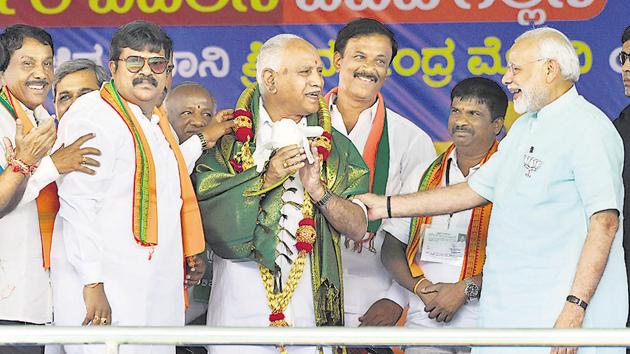
Yeddyurappa’s ‘ghar wapsi’ might not bring as much gains to BJP as it expects: Had BJP not re-inducted Lingayat strongman BS Yeddyurappa, the elections would have been a walkover for the Congress. In 2013, the Karnataka Janata Paksha (KJP), which was floated by Yeddyurappa, cost the BJP as many as 35 seats in the state. Putting the KJP and BJP vote share together reduces the Congress’s seat tally to 99 in 2013 (See Chart 2).
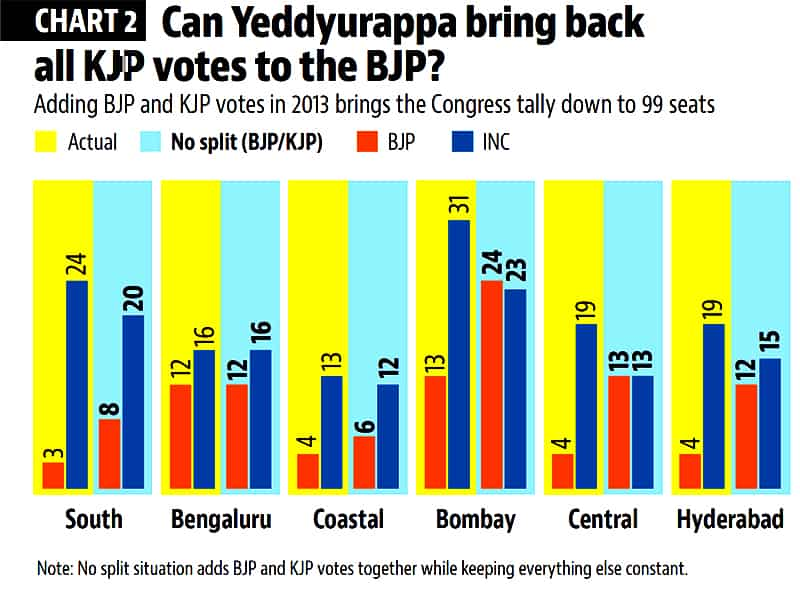
Still, it is unlikely that the BJP’s vote share in 2018 would be a simple addition of the KJP and BJP vote in these elections. Most Lingayats would probably still vote for the BJP. However, a Lingayat village, which HT visited in Haveri district four days before polling, suggested that not all of them were committed to voting for the BJP.
A host of factors, including local candidates, and posturing (if at all) by influential Lingayat mutts before elections due to the government’s decision to recognise Lingayats as a separate religion, could influence their decision. A small shift in the BJP’s Lingayat vote towards the Congress could become crucial if it is backed by a consolidation of the AHINDA (the Kannada acronym for minorities, Dalits and backward castes) vote, which is what Siddaramaiah is aiming for.
Potential erosion of the non-Vokkaliga JD(S) vote: JD(S) polled around 20% of total votes in the past two assembly elections. This is much more than the Vokkaliga population, which is its primary support base. What happens to JD(S)’s non-Vokkaliga’s vote bank could well decide this outcome. In the 2013 elections, the JD(S) played spoiler in as much as 45 seats, out of which 41 were outside its traditional stronghold of southern Karnataka (See Chart 3).
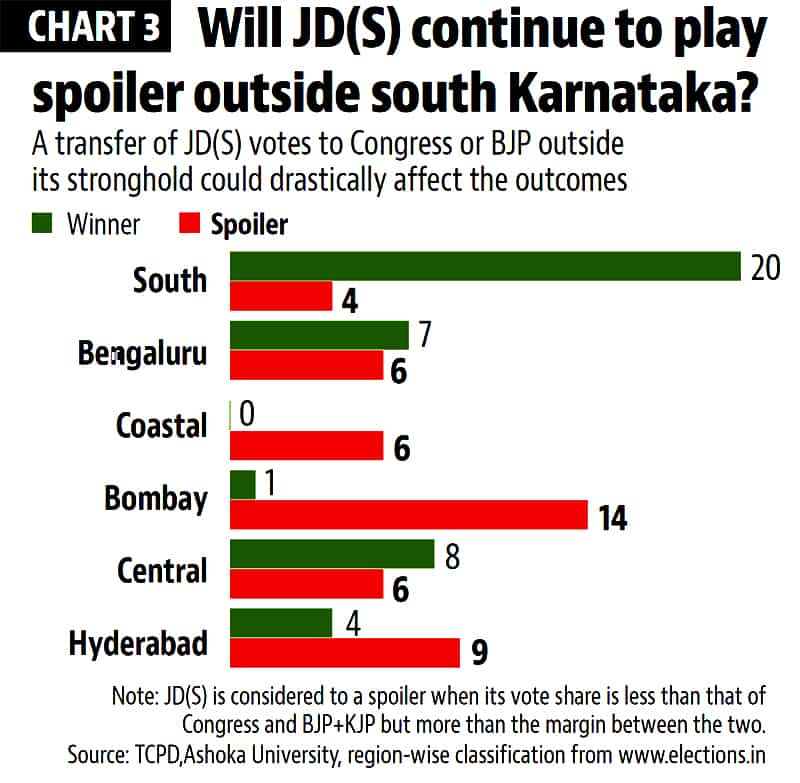
The only clear community-based polarisation, which one comes across in the state, is among Muslims. It goes beyond the communally sensitive region on the coast this time. Muslims, who admit to having voted for the JD(S) in previous elections, are explicit about voting for the Congress this time.
Scepticism about JD(S)’s overall performance and the likelihood of it doing business with the BJP in case of a hung assembly are the factors they cite. In case the JD(S)’s non-Vokkaliga non-Muslim voters outside Southern Karnataka also shift towards the Congress, the latter could gain a lot. To be sure, a consolidation of Muslim votes behind the Congress could also create a counter-polarisation behind the BJP.
An AHINDA consolidation might be very difficult to read: Interviews across multiple assembly seats in the state clearly show one thing: no party can hope to win a seat on the basis of support from one of the two dominant caste groups, Vokkaligas and Lingayats, or Muslims. The caste arithmetic explains this. These three groups accounts for just over one-third of the state’s population (See Chart 1). It is not very easy to read how the other caste groups are planning to vote, except probably the Kurubas, who share their caste with Siddharamaiah.
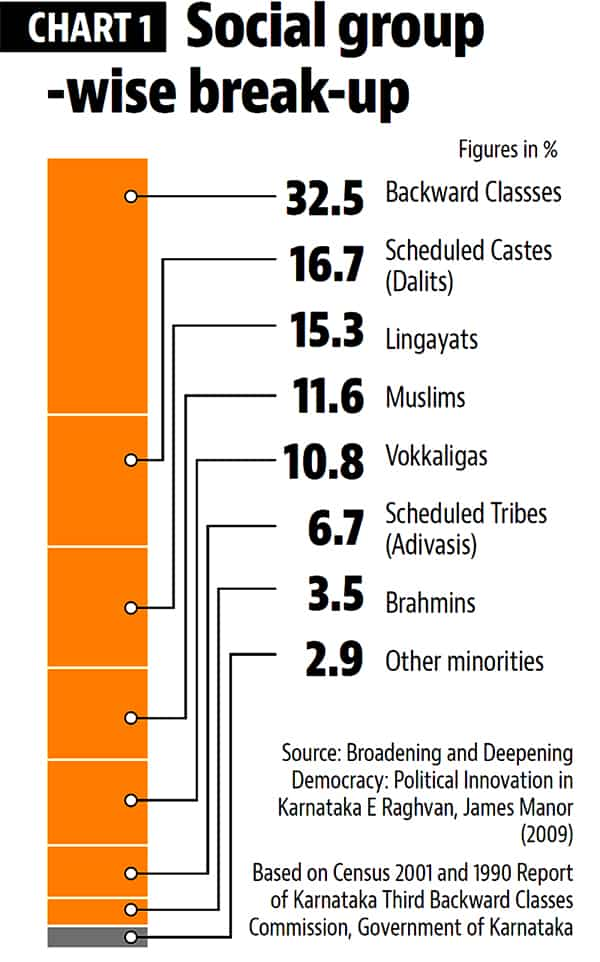
Although a large number of Dalits appears to be behind the Congress, the division between so-called touchable and untouchable Dalits and alienation of Dalits in some pockets due to an aggressive backward caste consolidation might also bring some gains to the BJP. The government’s welfare programmes have also bought it some extra support and most likely muted anti-incumbency among the poor, most of whom are likely to be from backward castes and Scheduled Castes (SCs).
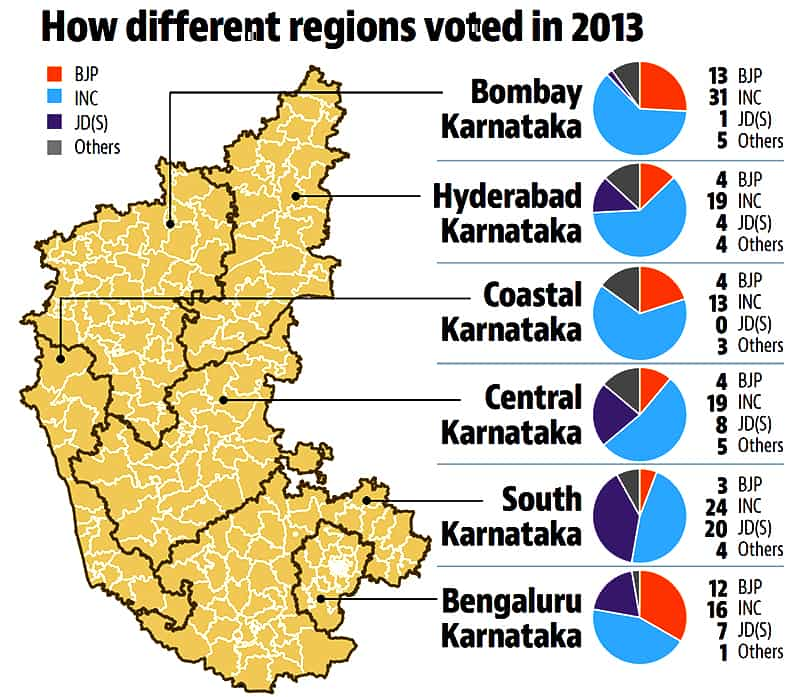
Some farmers among the caste groups who have been historically sympathetic to the Congress are angry because they think farming was more profitable during the previous two governments. At some places, people across caste groups have formed a cohort of sorts due to issues such as GST and demonetisation. For each such case there are many instances of the economic pain becoming secondary to the cause of supporting Hindutva.
Each of these factors will matter when the results are declared on May 15. The Karnataka elections will definitely have a lot of influence on the course of national politics in the run-up to 2019. However, the reverse does not seem to be true from what we saw in the field. By and large, the contest is driven by local issues.






